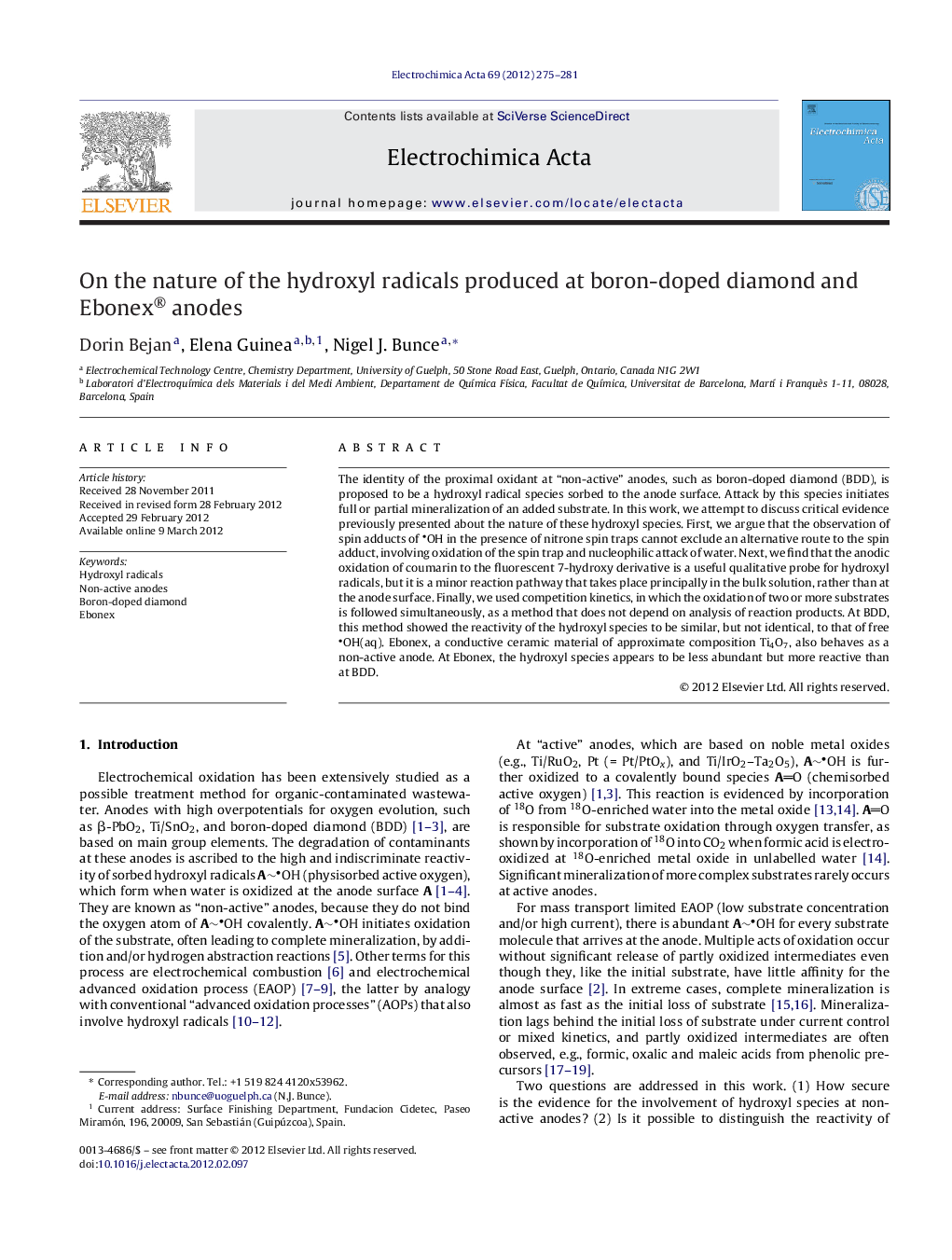| کد مقاله | کد نشریه | سال انتشار | مقاله انگلیسی | نسخه تمام متن |
|---|---|---|---|---|
| 188754 | 459666 | 2012 | 7 صفحه PDF | دانلود رایگان |

The identity of the proximal oxidant at “non-active” anodes, such as boron-doped diamond (BDD), is proposed to be a hydroxyl radical species sorbed to the anode surface. Attack by this species initiates full or partial mineralization of an added substrate. In this work, we attempt to discuss critical evidence previously presented about the nature of these hydroxyl species. First, we argue that the observation of spin adducts of OH in the presence of nitrone spin traps cannot exclude an alternative route to the spin adduct, involving oxidation of the spin trap and nucleophilic attack of water. Next, we find that the anodic oxidation of coumarin to the fluorescent 7-hydroxy derivative is a useful qualitative probe for hydroxyl radicals, but it is a minor reaction pathway that takes place principally in the bulk solution, rather than at the anode surface. Finally, we used competition kinetics, in which the oxidation of two or more substrates is followed simultaneously, as a method that does not depend on analysis of reaction products. At BDD, this method showed the reactivity of the hydroxyl species to be similar, but not identical, to that of free OH(aq). Ebonex, a conductive ceramic material of approximate composition Ti4O7, also behaves as a non-active anode. At Ebonex, the hydroxyl species appears to be less abundant but more reactive than at BDD.
Journal: Electrochimica Acta - Volume 69, 1 May 2012, Pages 275–281